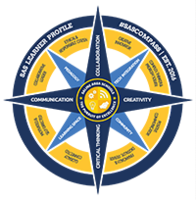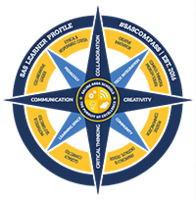Building a brand-new school website or redesigning an existing one is an exciting undertaking. Yet once the decision has been made to improve your school’s online presence, it can be hard to know exactly where you should start.
From navigation and ADA compliance to user experience and mobile friendliness, school website design can all feel a bit overwhelming. We’re here to help you sort through the noise and focus on exactly what matters most when building a new website.
In this article, we’ll cover the three main options to get started.
Determine Your Approach: Do It Yourself, Marketing Agency, or Education Focused CMS
Before you even get to questions about layout, templates, and usability, you’ll first need to pick which approach to website development is going to work best for your school and team. There are 3 primary ways to get your website built: the DIY (do-it-yourself) method, hiring an external web design agency, or partnering with an education specific CMS (content management system) provider.
So, which option is best? The answer to that question depends on your school’s goals, resources, and capabilities. Here are a few considerations to keep in mind as you decide:
- What is the scope of your project? Are you hoping to build an entirely new site, or simply make some updates to your current website?
- What is your budget?
- Does your staff have the level of expertise needed to create and customize a website?
- Can someone on the team own this project from beginning to end?
When is it best to use a DIY approach?
Building or redesigning a website yourself can have many benefits – especially if you’re on a tight budget. Thankfully there are many foundational templates and intuitive builders like Wordpress, Wix, or Squarespace that allows a person to build a fully functional website without a background in programming.
However, the trade-off here is the cost in labor hours. DIY website design takes at least 3 months to produce a working draft and that’s only if you have internal resources fully devoted to the project who have design capabilities, technological aptitudes, and great organizational skills.
The DIY approach could be a good option for you if you meet the following criteria:
- You have a smaller school that only requires less than 20 webpages.
- You have an internal, technically-savvy staff member who takes full responsibility of the project
- You’re not under a tight deadline
- You have an understanding of ADA compliance for school websites. (For more information here, check out our ADA checklist for 2022.)
- You have a budget of under $1,500
When is it best to use a non-education specific marketing agency?
Web design agencies come in all shapes and sizes; from the sole practitioner to large multi-practice firms. There are several resources like Creative Circle, Upwork, or (for the more budget conscious) Fiverr that can help you narrow your search. Note that 9/10 times costs can be 10 – 25% higher than if you were to find the company directly since the recruiting services incorporate their premium into the agency’s hourly fee.

Here’s when hiring a general design agency makes sense:
- You need branding services with your website such as logo design or help crafting a mission statement.
- You want a website that is NOT template based – completely unique.
- You don’t see yourself needing immediate updates. When websites are hard-coded, the client will typically need to work through an account manager vs. being able to do it themselves.
- You’re interested in additional marketing services like public relations, graphic design, or social media management
- You have a monthly retainer budget of at least $500/month.
When is it best to use an education focused content management system (CMS) partner?
While also an outside resource, the difference here is that designing your website on an education specific CMS is a bit more like a blend between the fully external and the fully internal options. For example, the Foxbright approach is to handle all the heavy-lifting of website design by building an easy-to-use website management platform. Then, after a personalized initial training and with ongoing customer support, any authorized administrator, teacher, coach, or staff member can add/update content specific to their area of responsibility.
This option would be a good fit for you if the following sound like your needs:
- You have a lot of information you need to regularly communicate to parents, students, staff, and your community
- You need help ensuring you meet all American Disability Act website compliance requirements
- You’re unable to have an internal resource fully committed to the project implementation for at least 3 months
- You need a website designed for an entire school district or multiple buildings with different kinds of students
- You need some higher level elements such as social media integration, a mobile app, an event calendar, etc.

Interactive District Map and School News Highlights Examples

Example of Password Protect Pages login screen for staff
Conclusion
The process of modern school website design has thankfully come a long way from the days where everything had to be hard coded. There are several resources and great partners to help along the way.
With over 20 years of experience in education-based technology, we exist to help our partners succeed. So, whether you decide to do it yourself, work with us, or even select a competitor, we’re happy to help you confidently make a decision that ensures your school’s brand is visible and engaging online.
For more help on your project, visit our Getting Started page to receive a personalized consultation catered to your needs.















